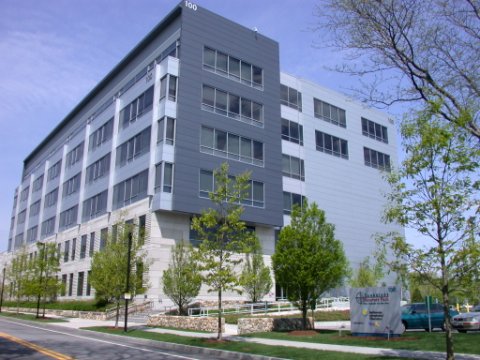|
|
|
|
Central EngineeringEngineering and Machine Shop Costing |
||
|
|
Engineering and Machine Shop Services Costs:
Central Engineering has been established as a distinct Cost Center within SAO. The costs of engineering services are calculated by charging an hourly rate for the actual time staff spend working on a project. A project’s cost will depend on what type of fund they use. For staff who are employees, the rate consists of the employee's hourly salary, multiplied by the personal leave rate, then by the fringe benefits rate, then by the CE overhead rate. If a project is drawn on federal or internal overhead funds, this is the final cost. If other funds are used, the General and Administrative rate (this consists of CE's assessed share of the operating expenses of SAO overhead departments including Human Resources, Financial Management, and the Computation Facility) is also added. Occasionally, CE supplements its staff with technical services contractors. The rate for contractors' time would include the hourly rate paid to their employing agency plus the CE overhead rate. Then, if the project is not drawn on federal or internal overhead funds, G & A will also apply. Like other SAO overhead rates, the engineering burden rate is every other year for two years at a time. It is calculated as a ratio of the estimated annual operating costs of the department to the value of the CfA scientific divisions' projected requirements for engineering services. Operating costs include: rent, communications, management and support staff salaries, supplies, maintenance of engineering lab space and computer systems, recruitment and relocation expenses, tuition reimbursement, etc.; plus CE's assessed share of the operating expenses of SAO overhead departments including Human Resources, Financial Management, and the Computation Facility. The engineering burden rate, and its component base and expenses, are subject to the same monitoring, audit, and final approval by the external auditor as are the other SAO overhead rates. For fiscal year 2017 and 2018, the following are the rates applied:
Fringe Benefits Rate: 26% Fringe Benefits Rate Intermittent Appointees: 8.4% Engineering Overhead Rate: 28.7% General and Administrative Rate: 13.5% Additionally, if you require the Machine Shop to procure materials for you, the cost of those materials plus the CE overhead rate for that base cost would be billed to you monthly. The biennial rate negotiations take time and effort and it is not uncommon to receive the two year rates after the first year of the cycle has commenced. When this occurs, we use the previous year’s rate and invoice as normal. Once we receive the new rates, Financial Management will issue a corrected invoice. Information Required to Establish New CE Jobs:
Project Cost Accounting: Each CE job is assigned a unique job number and, if applicable, associated task numbers. A Microsoft Project schedule is generated for the job and files are created and associated with the job in the Cobra software. If the schedule is not generated by either AIS or the CEA, kindly add the CEA to the resource list. Then, the CEA requests a new account key for WebTA. CE staff receive weekly timecards which contain the hours in the schedule for each project to which they are assigned on a monthly basis. Staff members record their actual productive hours each week in WebTA. That data is taken and incorporated into next week’s timesheet, with the declining balance of hours. Project cost-to-complete reports are generated for each week and also for month end and are deposited on the EVM Reports Center website by the AIS group. This allows designated project management and administration access to this information. The reports detail actual charges in hours and dollars as well as projections of future cost. CfA Projects Funded Through HCO or Harvard University: The process for arranging for engineering support for projects funded through the Harvard College Observatory is the same as described above except that administrators of these projects must submit a Harvard University Purchase Order to the CEA instead of fund number information. A few important notes:
|
|




